Exploring the Majestic Temple of Seti I in Abydos
The Temple of Seti I at Abydos is certainly a stupendous creation worthy of mention, both as regards architecture and adorability. It is close to the present town of Al-Balyana and ranks with the more important, magnificent, and well-preserved buildings of the New Kingdom. Even as the eyes turn to the Majestic Land of the Nile to the left, the sight of this temple, sometimes accompanied by thoughts of a tour through Luxor that may help to shed some light on the temple and indeed the history of the country, rises before the visitor's eyes.
Historical Significance
The Temple of Seti I, otherwise known as the Great Temple of Abydos, was constructed by Pharaoh Seti I but completed by his son, Ramesses II. Abydos itself is one of the oldest towns in Egypt and was always considered a major cult center dedicated to Osiris, the god of the afterlife. This makes it an ultimate feature of any Egypt luxury vacation and a magnet for history buffs from all corners of the world, along with top archaeologists.
Seti I, the principal patron of this temple, was the second pharaoh of the Nineteenth Dynasty of Egypt. Resurgence in Egypt's power and culture characterized the times of this ruler, like other rulers of the era of the New Kingdom Period, also known as the period of New Empire. At Abydos, his temple testifies to his great commitment to gods and the afterlife. Construction of the temple started in c. 1306 BCE, and under Ramesses II, it was completed with still greater magnificence.
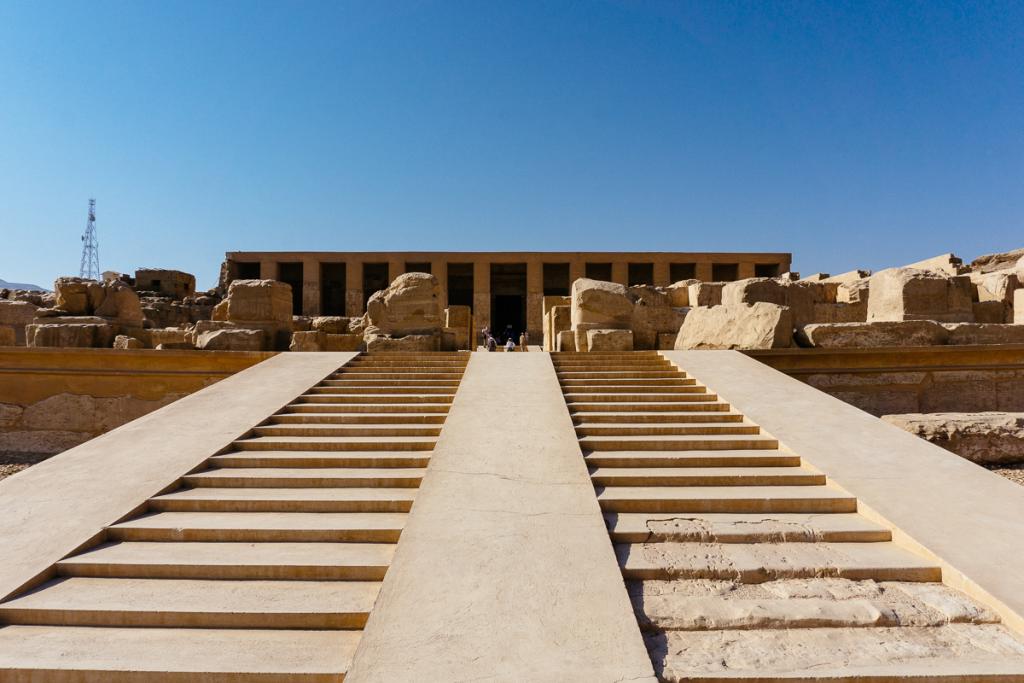
Architectural Marvel
The Temple of Seti I is known for its plan with an unusual shape, nothing like the standard straight axis applied in other temples in Egypt. Such a change in design provides seven sanctuaries dedicated to the following gods: Osiris, Isis, Horus, Amun-Ra, Ra-Horakhty, Ptah, and last but not least, Seti I himself. Each of them is introduced with innumerable carvings and intricate reliefs that depict the numerous rituals of these religions and all the activities between the pharaoh and the gods.
Perhaps most impressive is the grand, column-filled room known as the hypostyle hall. The columns are all intricately carved and covered with hieroglyphs related to divine encounters and various mythological events. The ceiling in this hall is rather impressive, too; the painting of the stars represents the night sky and adds mystique to the temple's surroundings.
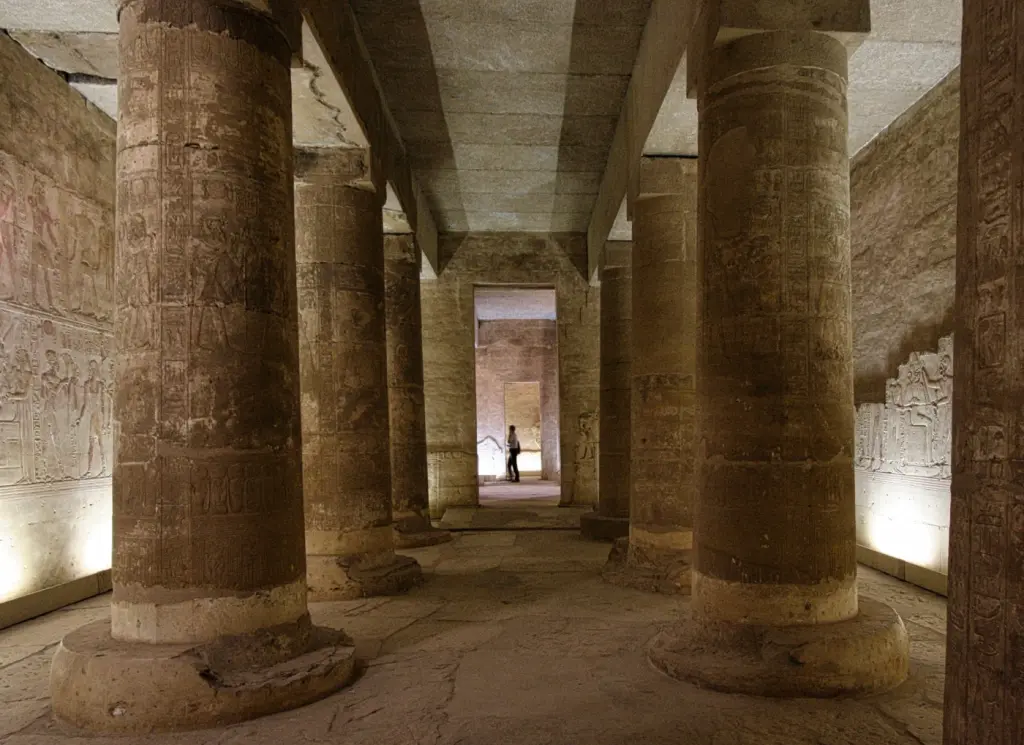
The Osireion
To the southwest of the main temple complex lies the Osireion, which symbolically represents the tomb of Osiris. Being underground, it is believed to signify the primeval mound of creation and the tomb of Osiris himself. It is much different in form from the rest of the temple: vast blocks of granite and a pool of water in the middle make for what would be equivalent to the waters of the underworld. This already uniquely positions the Temple of Seti I as a must-visit during Egypt day tours, allowing visitors the opportunity to behold facets of ancient Egyptian religious architecture.
Religious and Cultural Significance
Abydos played a significant role in ancient Egyptian religious life. The Temple of Seti I formed an integral part of Osirian rituals and festivals. It was here, to Abydos, that pilgrims from all over Egypt came to worship and venerate Osiris, to partake in the annual Osiris Mysteries—a set of rituals commemorating his death and subsequent resurrection. Detailed reliefs in the temple bear witness to religious practices that were deeply spiritual and connected between the ancient Egyptians and their pantheon.
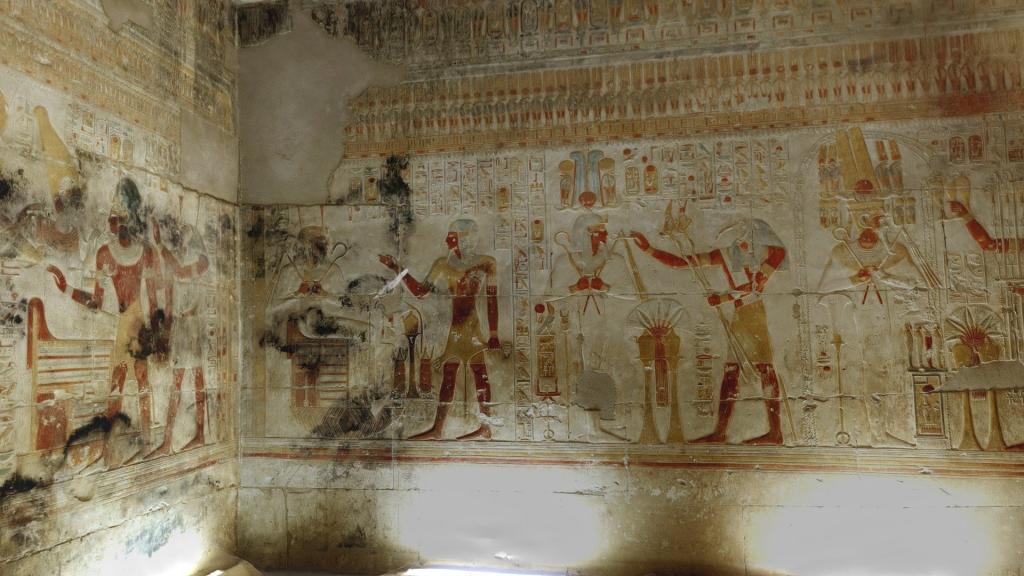
Adding Abydos to an Egyptian travel package gives a feel of a very different culture. By constructing the Temple of Seti I, it shows the religious thinking of that era and is in many ways a repository for artistic and historical lore. All of its walls are decorated with very well-preserved reliefs representing scenes regarding offerings, divine encounters, and mythological narratives which would be like a treasure trove for historians and art adepts alike.
Modern-Day Exploration
Today, the Temple of Seti I is one of the premier sites which tourists visit while in Egypt. One of the more common Luxor tours available incorporates a visit to Abydos, thus affording the visitor a firsthand perspective on the temple's grandeur. The drive from Luxor to Abydos takes about three hours by car and provides a beautiful drive through the Egyptian countryside.
Most travel companies offer complete Egyptian travel packages for those seeking Egypt luxury tours. These often include Abydos visits with educated Egyptologists who bring the temple to life with their vast knowledge of its history and importance. One can wander through the chambers, seeing fragile and intricate carvings and even taking part in special visits for an opportunity to experience the lesser-known facets of this site.


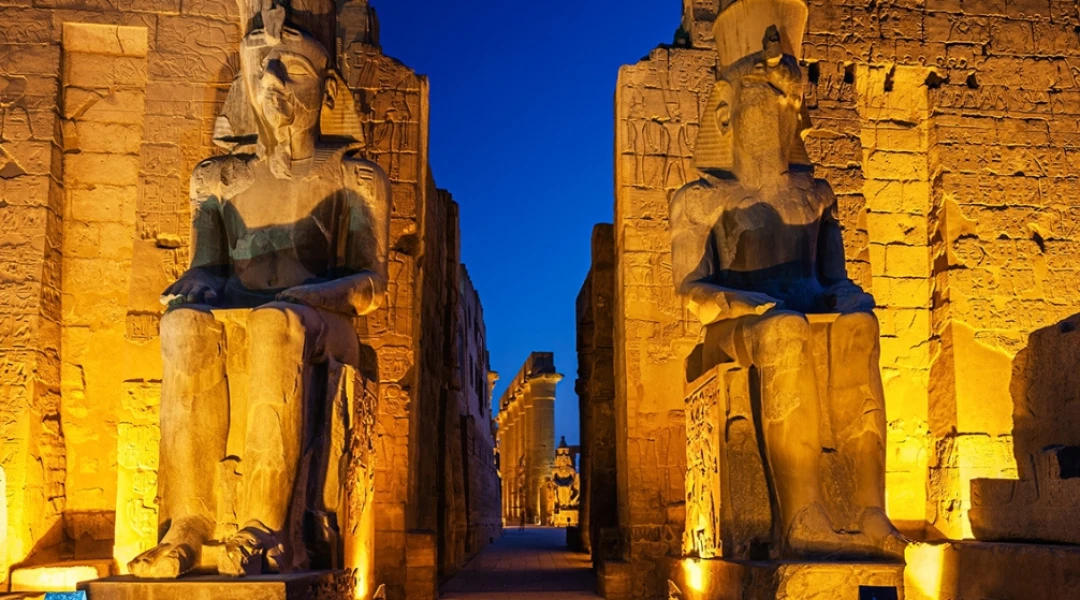


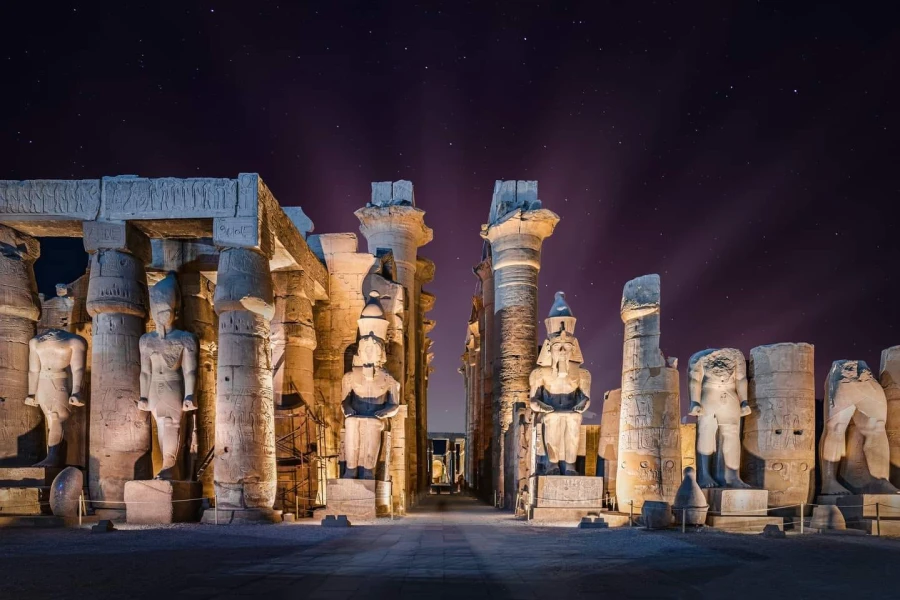

-webp.webp)






-webp.webp)
-webp-webp.webp)
-webp-webp.webp)
-webp-webp.webp)
-webp-webp.webp)
-webp-webp.webp)
-webp-webp.webp)
-webp-webp.webp)
-webp-webp.webp)
-webp-webp.webp)
-webp-webp.webp)
-webp.webp)
-webp-webp.webp)
-webp-webp.webp)
-webp.webp)
-webp.webp)
-webp.webp)
-webp-webp.webp)
-webp.webp)
-webp-webp.webp)
-webp.webp)
-webp.webp)
-webp.webp)
-webp.webp)
-webp.webp)
-webp-webp.webp)
-webp-webp.webp)
-webp-webp.webp)
-webp-webp.webp)
-webp-webp.webp)
-webp-webp.webp)
-webp-webp.webp)
-webp.webp)
-webp-webp.webp)
-webp-webp.webp)
-webp-webp.webp)
-webp-webp.webp)
-webp-webp.webp)
-webp-webp.webp)
-webp-webp.webp)
-webp-webp.webp)
-webp-webp.webp)
-webp-webp.webp)
-webp-webp.webp)
-webp-webp.webp)
-webp-webp.webp)
-webp-webp.webp)
-webp.webp)
-webp.webp)
-webp.webp)
-webp.webp)



